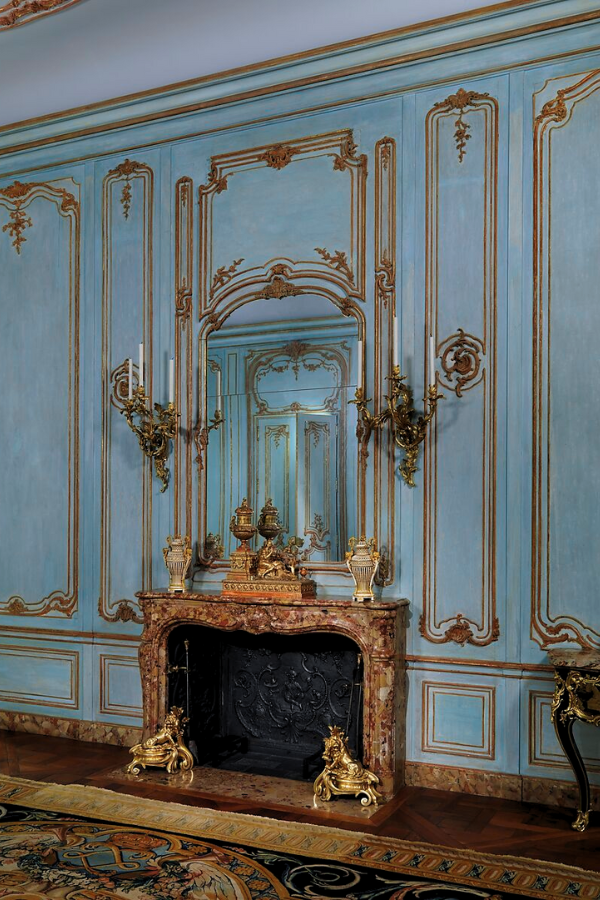

Age of Opulence: French Rococo Interiors and Architecture
Summary
This article delves into French Rococo interiors and architecture, highlighting its ornate and elegant style that emerged in early 18th-century France. It explores Rococo’s influence on fine arts, furniture, and architectural details, characterized by light colors, playful themes, and intricate decorations. This style is celebrated for its aesthetic appeal and influence across Europe, despite its eventual replacement by the more restrained Neoclassicism.
Reflection Questions
- How does the Rococo style’s emphasis on ornamentation and asymmetry reflect the social and cultural attitudes of 18th-century France?
- In what ways has Rococo influenced modern design practices, especially in terms of interior decorating and architecture?
- Considering the criticism of Rococo for its perceived excess and frivolity, how might these perceptions affect the appreciation of historical styles in contemporary culture?
Journal Prompt
Reflect on a style of art or architecture that resonates with you, similar to how Rococo appealed to the aristocrats of the 18th century. Describe what draws you to this style and how you see its influence in your daily environment or in your personal aesthetics. Consider what this preference says about your own tastes and personality.
With ornate detailing, light colors, and playful themes, French Rococo brought a sense of elegance and whimsy to interiors and architecture. From the lavish palaces of France to the grand residences across Europe, Rococo interiors are adored for their intricate stucco work, gilded decorations, and an overall sense of lightness and grace. An initially French trend evolved and spread to Germany, Sweden, Russia, Portugal, and elsewhere. Let’s explore the enchanting spaces that embody Rococo design. Below are some of the most iconic buildings and interiors that epitomize this exuberant artistic movement while adding their own spin.
What Exactly is French Rococo?
French Rococo, an exuberant artistic movement that flourished in the early to mid-18th century, is known for its ornate and elegant style that permeated painting, sculpture, architecture, and decorative arts. Originating in France during the reign of Louis XV, Rococo was a reaction against the grandeur, classical style, and strict regulations of the Baroque period. The word “Rococo” is derived from the French word “rocaille,” meaning rock or pebble, which refers to the intricate and fanciful shell-like decorations that are characteristic of the style.
In painting, Rococo is epitomized by light, pastel colors and fluid, graceful lines. The themes often revolve around love, nature, and playful, idyllic scenes. Artists like Jean-Antoine Watteau, François Boucher, and Jean-Honoré Fragonard were pioneers of this movement. Watteau’s fêtes galantes, such as Pilgrimage to Cythera, depict romantic and bucolic settings filled with elegantly dressed figures 32. Boucher’s work often included mythological and pastoral themes rendered with a sensuous and decorative approach, while Fragonard’s paintings are known for their exuberance and playful eroticism, exemplified in works like The Swing.
Rococo architecture and interior design are characterized by their ornate details and light-hearted themes. Interiors often featured elaborate stucco work, gilding, and mirrors, creating an airy and light-filled atmosphere. Furniture design included intricate carvings, curved forms, and luxurious materials like silk and velvet. Notable examples of Rococo architecture include the Salon de la Princesse in the Hôtel de Soubise in Paris and the Amalienburg in Munich, both showcasing the quintessential Rococo elements of asymmetry, scrolling curves, and the extensive use of ornamentation.
Rococo Beyond France
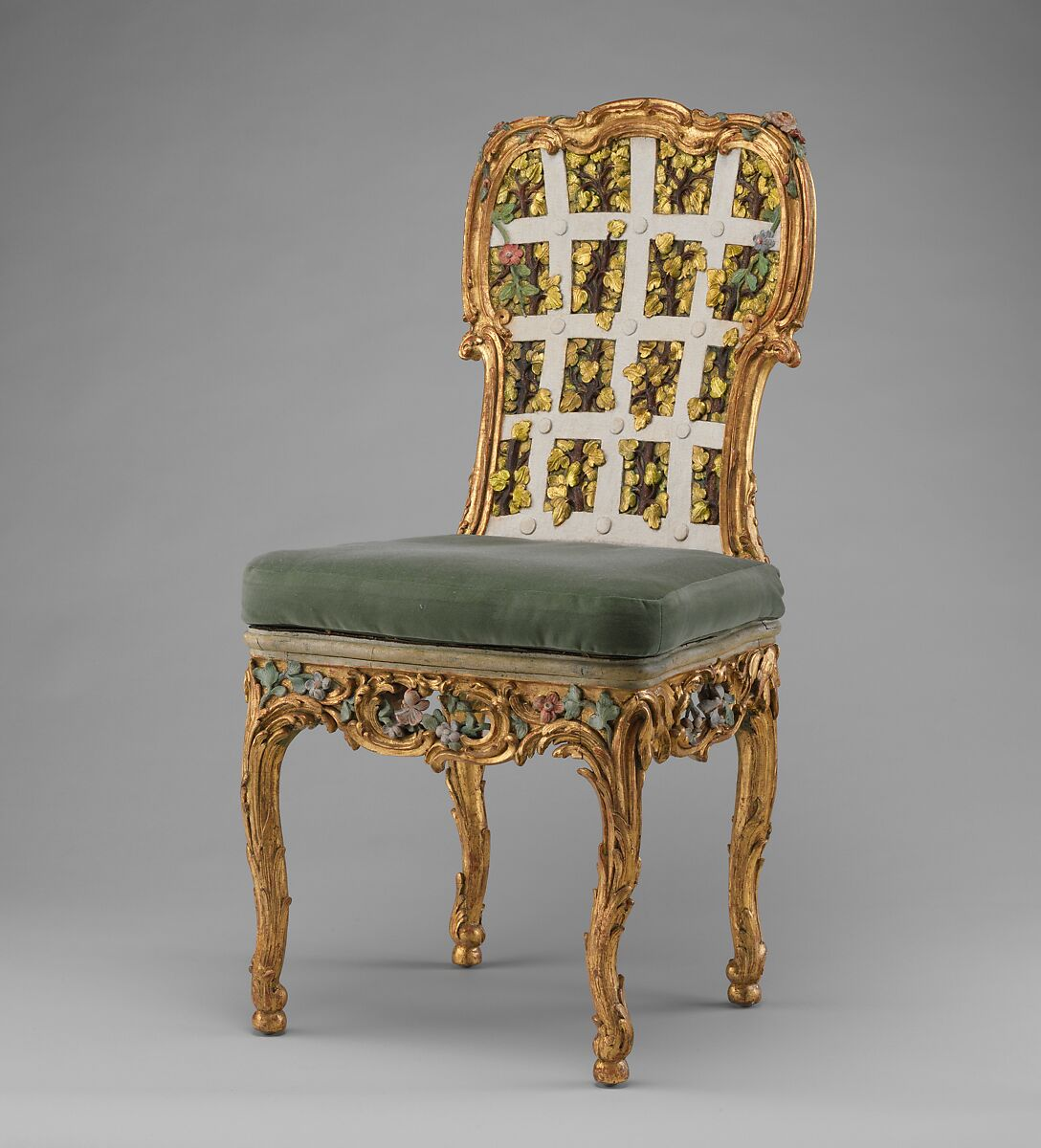

The Rococo movement extended beyond France, influencing other parts of Europe, including Germany and Austria. However, its whimsical and decorative nature also drew criticism for being frivolous and overly indulgent. By the late 18th century, the movement began to wane, giving way to the more restrained and classical lines of Neoclassicism, which sought to return to the simplicity and grandeur of classical antiquity. Despite this shift, the Rococo period remains celebrated for its contributions to the decorative arts and its influence on later artistic developments.
Taking a Closer Look at French Rococo in Fine Art
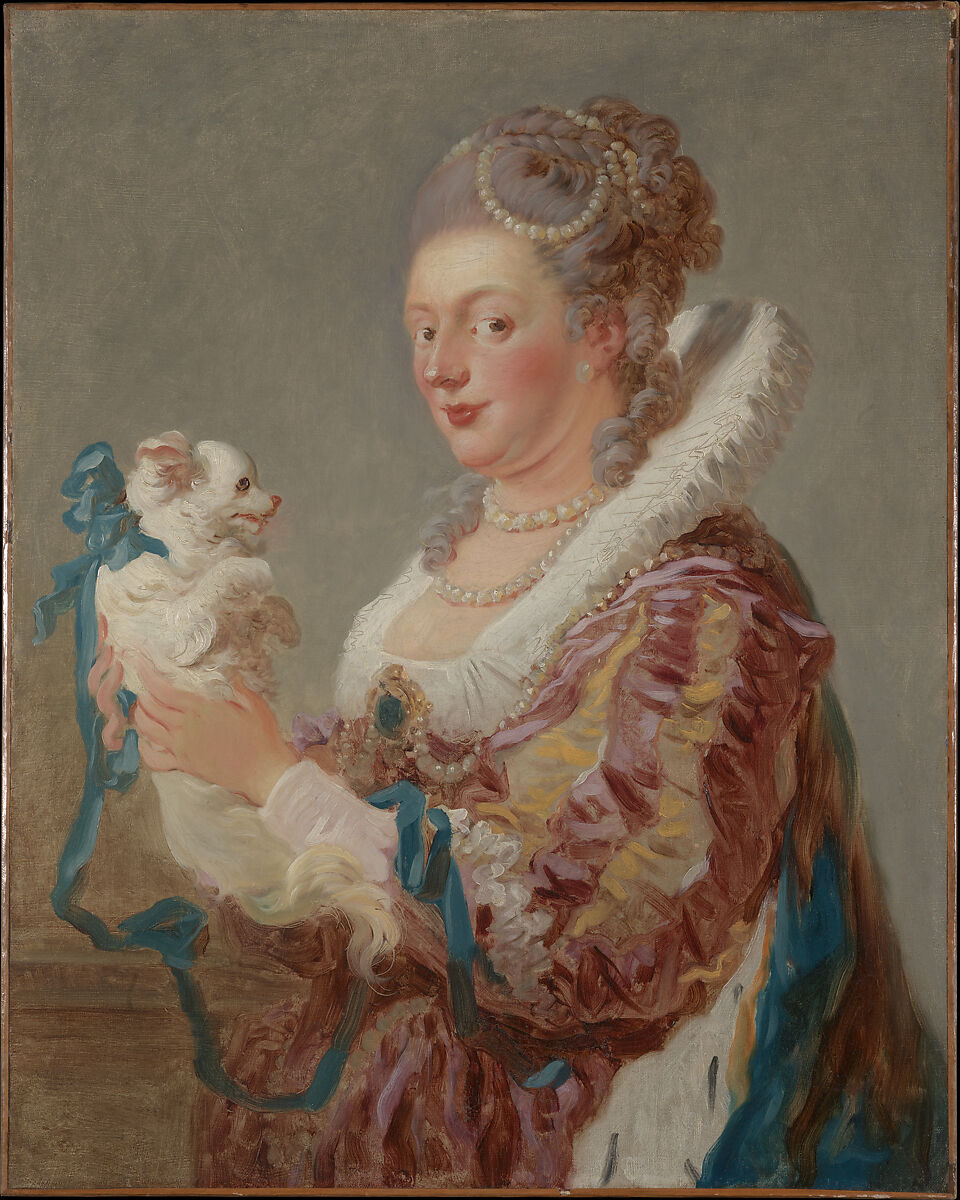

Paintings of the Rococo period are celebrated for their lightness, elegance, and decorative flair. One of the defining features of Rococo art is its use of soft, pastel colors that create a light, airy feel. The themes often revolve around playful and lighthearted subjects, depicting scenes of love, flirtation, and leisure in idyllic, pastoral settings. This approach contrasts sharply with the heavier, more dramatic themes of the preceding Baroque period, emphasizing instead a sense of grace and frivolity.
Another hallmark of Rococo paintings is their intricate and elaborate ornamentation, mirroring the decorative excesses seen in Rococo architecture and interior design. Artists of this period frequently employed detailed backgrounds and elaborate costumes to enhance the overall aesthetic. The compositions are characterized by flowing lines, curved forms, and asymmetrical designs, contributing to the dynamic and whimsical nature of the artworks. This decorative richness not only highlights the opulence of the Rococo style but also underscores its focus on beauty and pleasure.
Rococo paintings are distinguished by their combination of decorative sophistication and lighthearted subject matter. They capture the essence of an era that valued elegance, luxury, and the delights of the aristocratic lifestyle, making them enduring symbols of 18th-century art and culture.
Iconic Rococo Artists and Paintings
Jean-Antoine Watteau (1684-1721)
Many art history buffs argue that the Rococo style began with Jean-Antoine Watteau. His works, characterized by their elegance and refined use of color, prominently feature idyllic, pastoral scenes known as “fêtes galantes.” These scenes often depict aristocratic figures in lush, outdoor settings, engaging in leisure activities and romantic pursuits.
Notable works such as Pilgrimage to Cythera (1717) and The Embarkation for Cythera (1718-1719) exemplify his distinctive style. Watteau’s ability to blend fantasy and reality, combined with his delicate brushwork and vibrant palettes in each French Rococo painting, positioned him as a leading figure in the development of this style.
François Boucher (1703-1770)
François Boucher’s paintings epitomize the eroticism and pastoral themes of Rococo art. A favorite of Madame de Pompadour, the mistress of Louis XV, Boucher often depicted mythological and romantic scenes with a soft, sensuous style. His notable works include The Toilet of Venus (1751) and Madame de Pompadour (1756). Boucher’s mastery of color and his ability to create lush, dreamlike environments made his work highly influential. His art reflects the frivolity and decorative excesses of the Rococo period, cementing his status as one of its most important artists.
Jean-Honoré Fragonard (1732-1806)
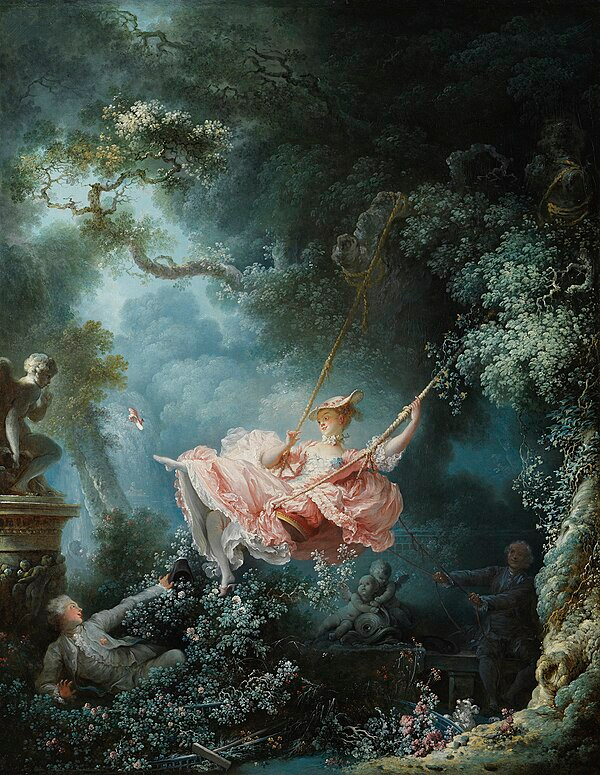

Another icon of French art, Jean-Honoré Fragonard is celebrated for his playful and exuberant scenes, which often depict themes of love and flirtation. His use of light and color, along with dynamic compositions, makes his works quintessential examples of Rococo art.
Notable works such as The Swing (1767) and The Progress of Love series (1771-1773) showcase his ability to capture the joy and spontaneity of intimate moments. Fragonard’s paintings are known for their vibrant energy and intricate detailing, contributing significantly to the Rococo movement’s artistic legacy.
Jean-Baptiste-Siméon Chardin (1699-1779)
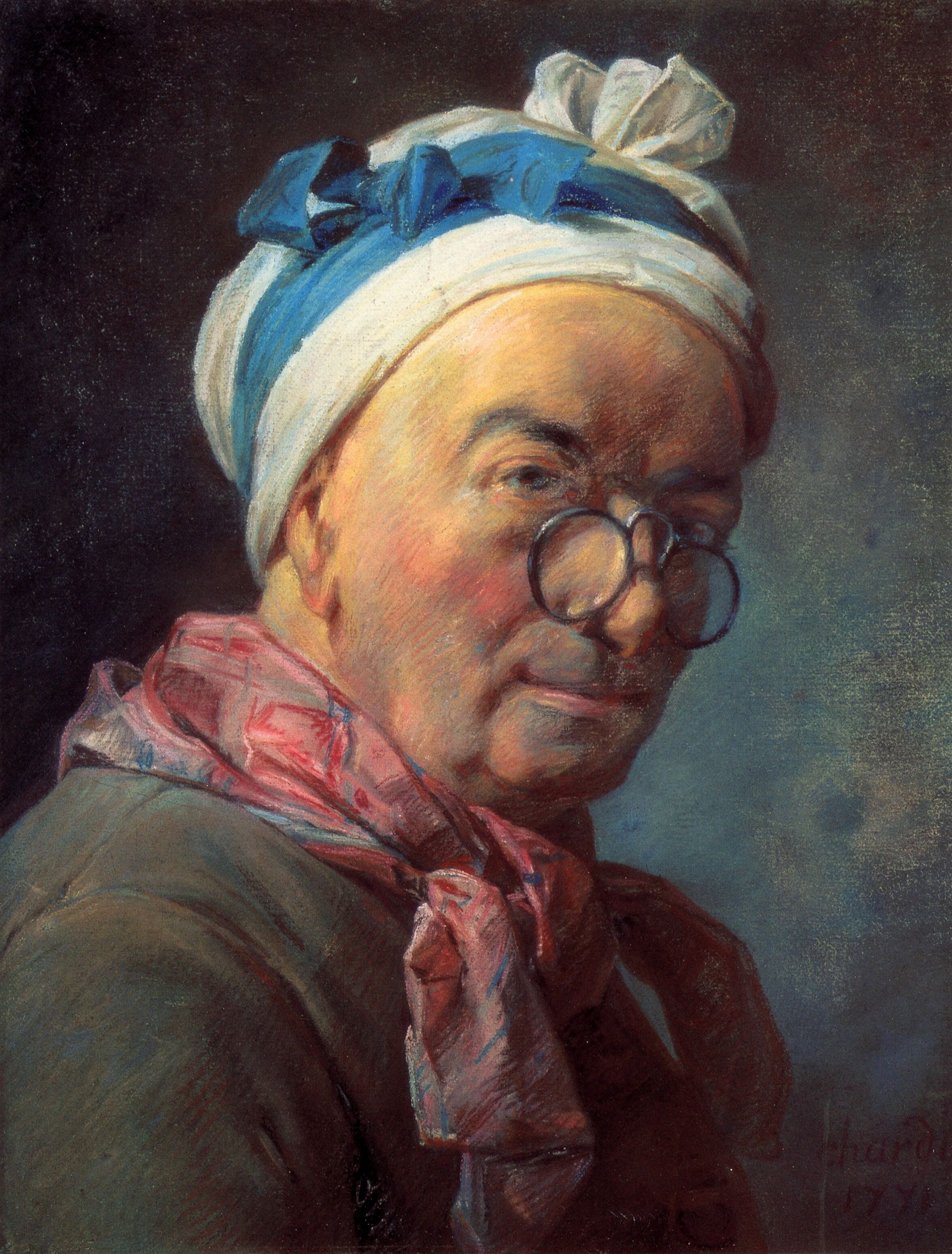

Jean-Baptiste-Siméon Chardin, although sometimes categorized separately from the typical Rococo frivolity, captured the elegance and detailed observation that align with Rococo aesthetics through his still lifes and domestic scenes. Notable works like The Ray (1728) and The Governess (1739) demonstrate his ability to depict everyday life with a sense of quiet beauty and introspection. Chardin’s focus on the subtle, often overlooked aspects of daily life provides a serene counterpoint to the more flamboyant works of his contemporaries.
Nicolas Lancret (1690-1743)
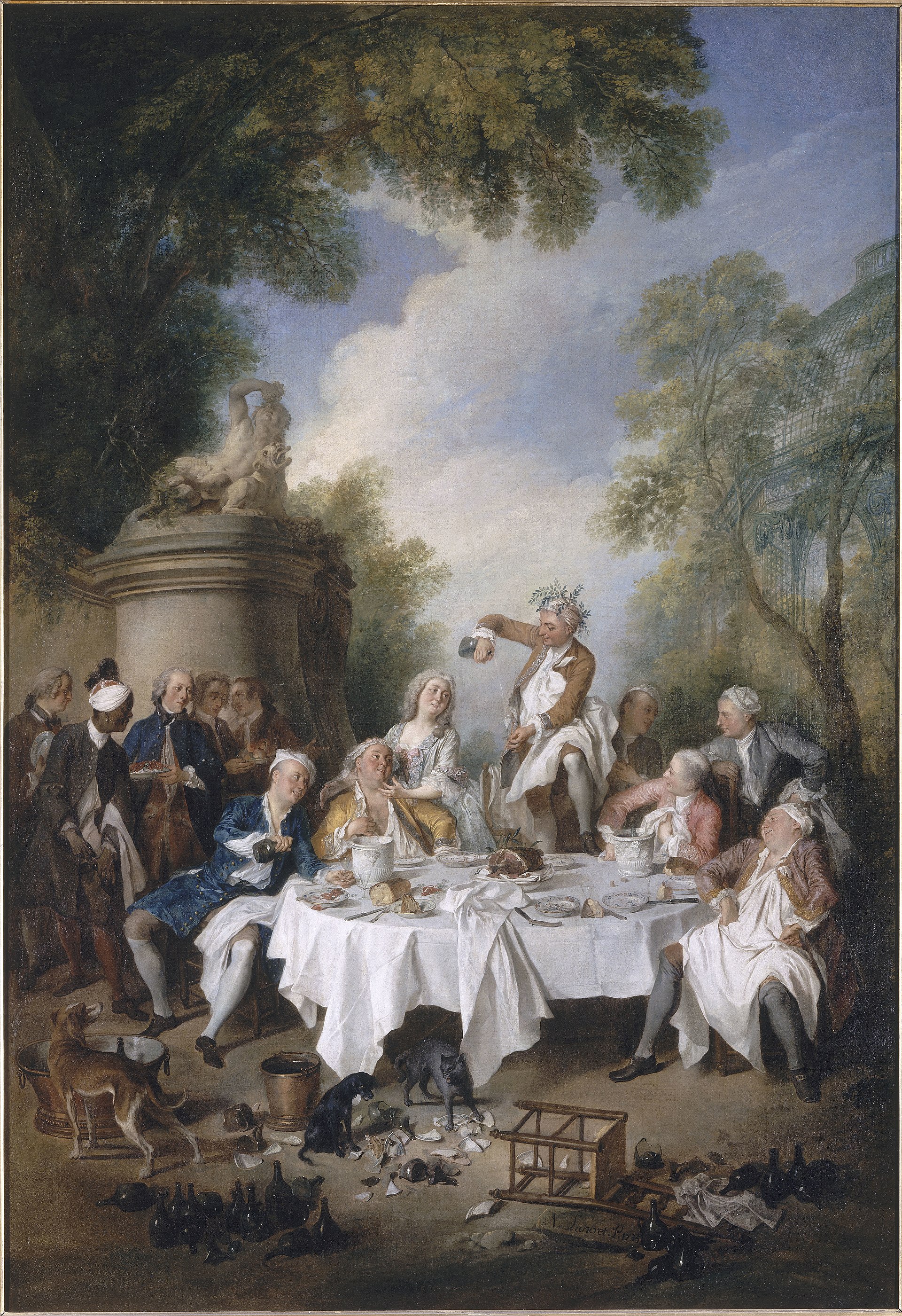

Nicolas Lancret, a follower of Watteau, specialized in fêtes galantes, capturing scenes of courtly amusements and outdoor festivities with a delicate and refined touch. His notable works include Dance in a Pavilion (1724) and The Earth (1731).
Lancret’s paintings are characterized by their graceful compositions and lively, yet nuanced, portrayal of social interactions. His ability to convey the charm and elegance of aristocratic leisure activities made him a prominent figure in the Rococo art scene.
Maurice-Quentin de La Tour (1704-1788)


Self-portrait with lace jabot by Maurice-Quentin de La Tour, 1764
Maurice-Quentin de La Tour is renowned primarily for his pastels, creating some of the most striking and intimate portraits of the Rococo period. His notable works include portraits of Louis XV and Madame de Pompadour. La Tour’s ability to capture the personalities of his sitters with a light, yet detailed approach is highly regarded. His portraits are celebrated for their lifelike quality and the delicate rendering of textures and expressions, reflecting the elegance and sophistication of the Rococo style.
Fuel your creative fire & be a part of a supportive community that values how you love to live.
subscribe to our newsletter
Taking a Closer Look at French Rococo in Architecture, Interiors, and the Decorative Arts
Rococo architecture is characterized by its ornate and elaborate details. Rococo buildings often feature asymmetrical designs, with extensive use of curves and naturalistic motifs such as shells, flowers, and leaves. One of the finest examples of Rococo architecture is the Salon de la Princesse in the Hôtel de Soubise in Paris. This room showcases the quintessential elements of Rococo, including gilded stucco, large mirrors, and intricate wall carvings. Another notable example is the Amalienburg hunting lodge in Munich, designed by François de Cuvilliés, which features an exquisite Hall of Mirrors with ornate stucco work and lavish gilding.
Rococo aesthetic interiors are known for their opulence, ornate decoration, and attention to detail. The interiors often include elaborate stucco work, pastel colors, and an abundance of decorative elements such as mirrors, tapestries, and chandeliers. Furniture is typically characterized by its light, graceful forms and intricate carvings, often gilded and upholstered in luxurious fabrics like silk and velvet. The overall effect is one of lightness and elegance, creating spaces that are both visually stunning and inviting.
The interiors of the Palace of Versailles, particularly the private apartments of Louis XV and Madame de Pompadour, are prime examples of Rococo design. These rooms are adorned with delicate ornamentation, curved lines, and intricate details that exemplify the Rococo ethos.
The Rococo style also made a significant impact on the decorative arts, including furniture, porcelain, and metalwork. Rococo furniture is often asymmetrical, with sinuous lines and ornate decorations. Pieces like commodes, chairs, and tables are adorned with intricate carvings and often gilded to enhance their luxurious appearance. The Louis XV style of furniture is a prime example, characterized by its elegance and refined craftsmanship
French Rococo Flies Abroad: Fabulous Rococo Architecture and Interiors to Swoon Over
Amalienburg, Munich, Germany


Amalienburg, located in the Nymphenburg Palace Park in Munich, Germany, is a prime example of Rococo architecture and design. Built between 1734 and 1739, this hunting lodge was designed by François de Cuvilliés for Elector Karl Albrecht and his wife, Maria Amalia of Austria. The exterior of Amalienburg is relatively modest, but it gives way to an interior that is a masterpiece of Rococo style.
The building is renowned for its exquisite Hall of Mirrors, which epitomizes the elegance and lightness characteristic of Rococo. The hall is adorned with intricate stucco work, large mirrors that enhance the sense of space and light, and lavish gilding that adds a touch of opulence. This combination of elements creates a dreamy, almost fantastical atmosphere that is both luxurious and inviting.


The interior of Amalienburg showcases the pinnacle of Rococo design, with its emphasis on asymmetry, curves, and elaborate ornamentation. The rooms are decorated with delicate, pastel-colored wall paintings and richly detailed stucco reliefs that feature motifs of flowers, birds, and hunting scenes, reflecting the lodge’s original purpose. The use of mirrors and windows maximizes natural light, enhancing the airy and elegant ambiance.
The lavish use of silver and gold leaf, along with the finely crafted furniture, upholstered in luxurious fabrics, further underscores the Rococo penchant for extravagance and refinement. Every element of Amalienburg’s interior, from the detailed ceilings to the ornate furniture, works in harmony to create a cohesive and stunning example of Rococo artistry.
Notable Features: This hunting lodge features an exquisite Hall of Mirrors, designed by François de Cuvilliés, showcasing intricate stucco work, lavish gilding, and large mirrors that amplify the light and space.
Würzburg Residence, Würzburg, Germany
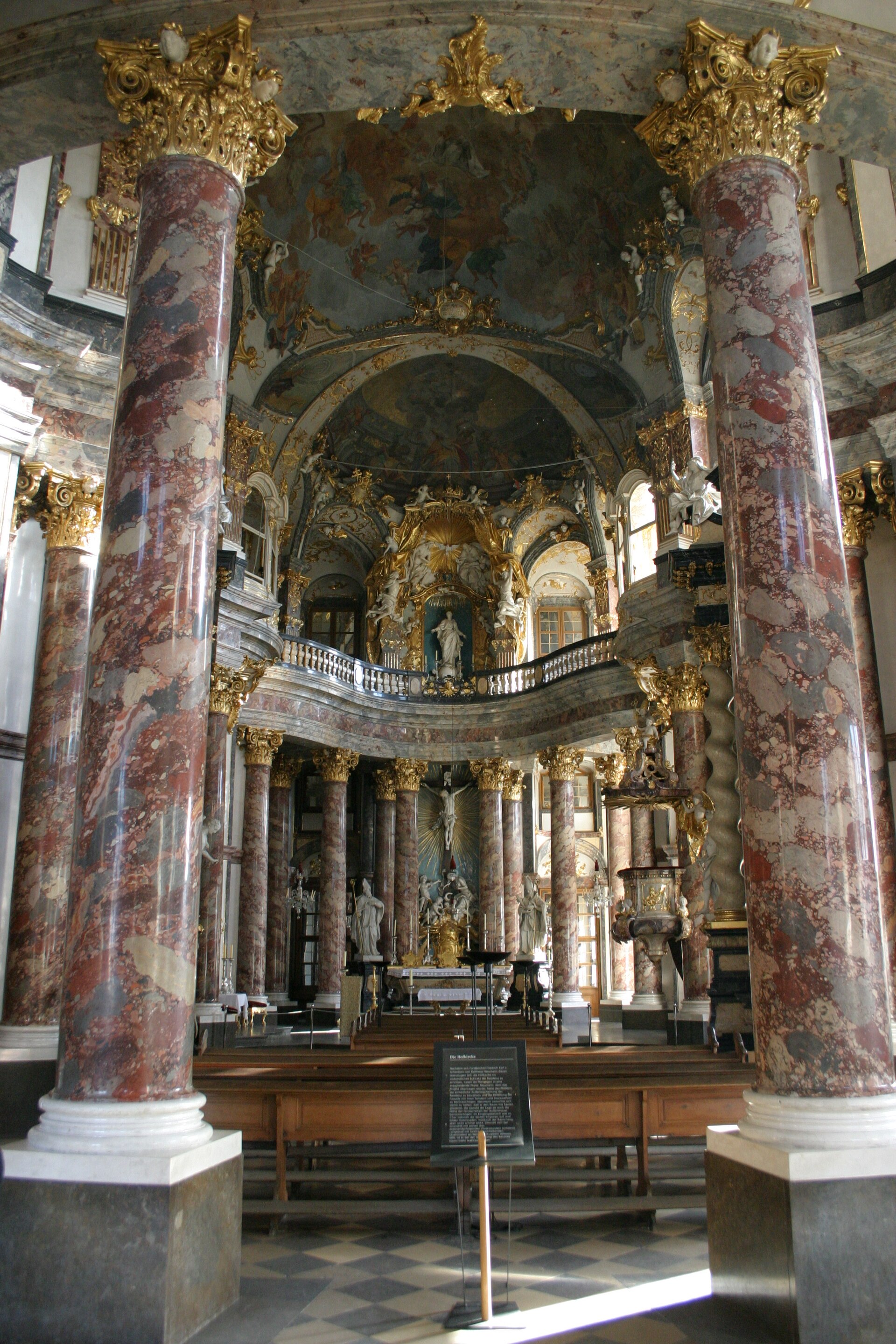

The Würzburg Residence, located in Würzburg, Bavaria, is a stunning example of Rococo architecture and interior design. Constructed in the early 18th century, this grand palace is particularly famous for its impressive grand staircase and the opulent Imperial Hall.
The grand staircase, designed by Balthasar Neumann, features a magnificent ceiling fresco by Giovanni Battista Tiepolo, which is one of the largest frescoes ever created. The fresco depicts the four continents and is renowned for its vibrant colors and dynamic composition. The Imperial Hall, or Kaisersaal, showcases richly detailed stucco work by Antonio Bossi, including intricate gilded decorations and elaborate reliefs, making it a highlight of Rococo artistry.
Notable Features: The grand staircase and the Imperial Hall are particularly famous, with elaborate frescoes by Giovanni Battista Tiepolo and richly detailed stucco work by Antonio Bossi.
Zwinger Palace, Dresden, Germany
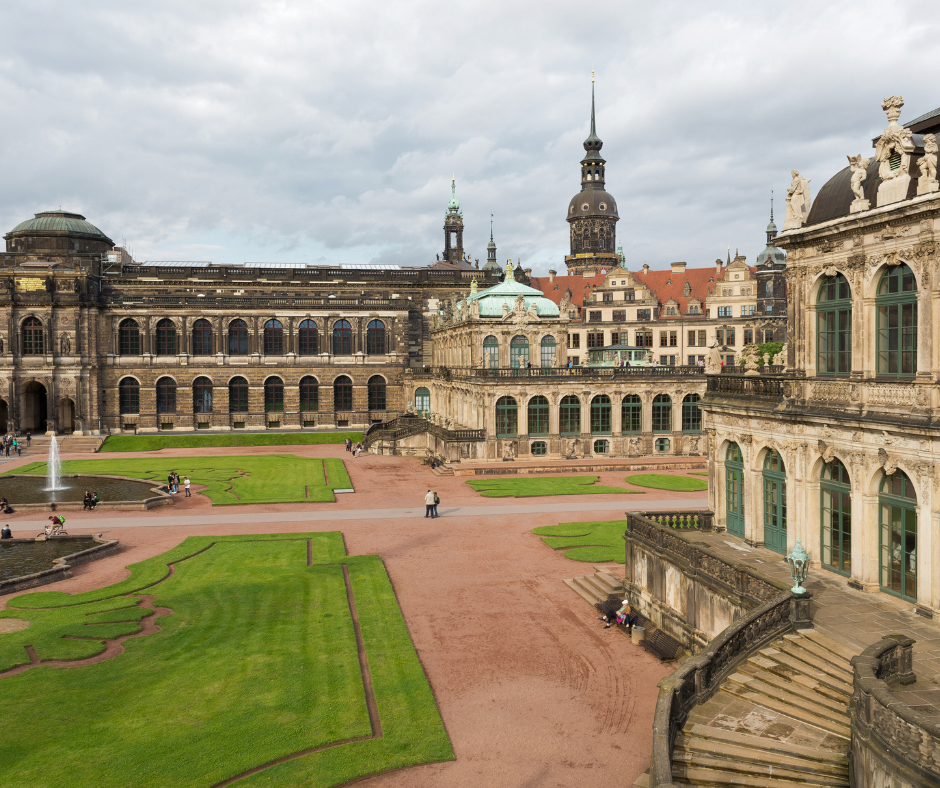

Zwinger Palace, located in Dresden, Saxony, is an exquisite example of German Rococo architecture. This palace complex, originally designed as an orangery and exhibition gallery, includes notable features such as the Crown Gate and the Wallpavillon.
The Crown Gate is adorned with intricate ornamental details and topped with a golden crown, while the Wallpavillon boasts dynamic sculptural elements that exemplify the playful and exuberant nature of Rococo design. The architectural forms of the Zwinger Palace, with their curves and elaborate decorations, create a sense of movement and joy, making it one of the most celebrated Rococo structures in Germany.
Notable Features: This palace complex includes the Crown Gate and the Wallpavillon, both adorned with detailed ornamentation and sculptural elements. The Rococo style is evident in the playful and dynamic architectural forms.
Palace of Queluz, Lisbon, Portugal
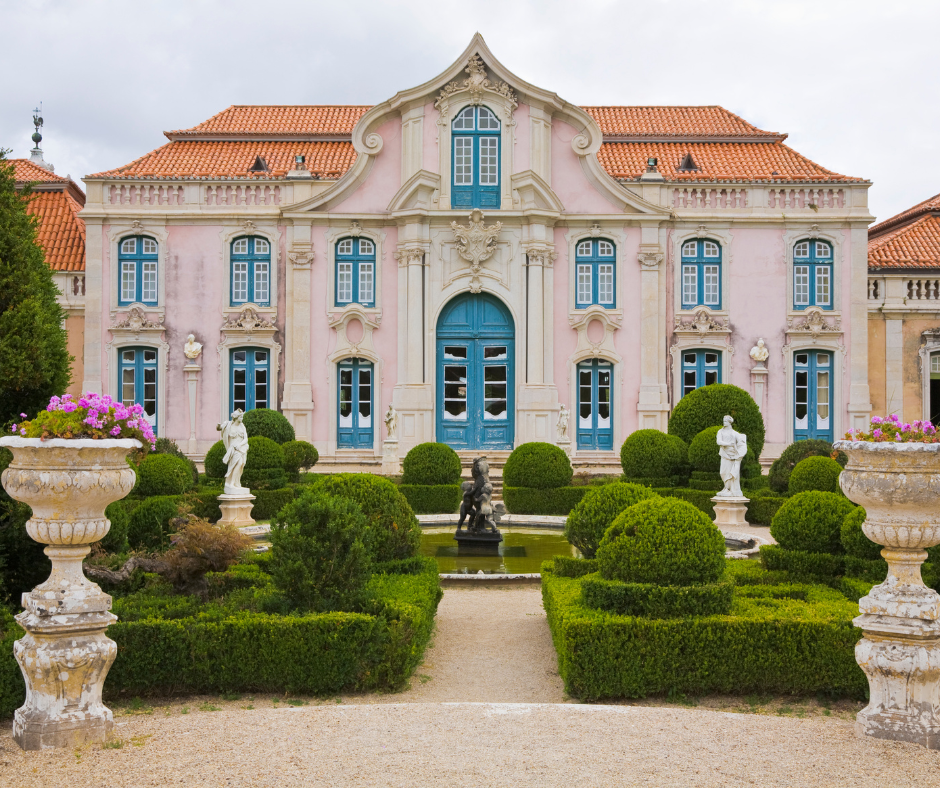

The Palace of Queluz, located near Lisbon, Portugal, is often referred to as the “Portuguese Versailles” due to its stunning Rococo interiors. Built in the mid-18th century, the palace features rooms that are richly decorated with intricate gilded woodwork and beautiful frescoes. Notable rooms include the Throne Room, with its grandiose gilded decorations, and the Music Room, adorned with elegant chandeliers and detailed ceiling paintings. The palace’s opulent design reflects the luxurious and ornate style typical of Rococo, making it a prime example of this artistic movement in Portugal.
Notable Features: Known as the “Portuguese Versailles,” this palace features stunning Rococo interiors, including the Throne Room with its intricate gilded woodwork and the Music Room adorned with beautiful frescoes and chandeliers.
Catherine Palace, Tsarskoye Selo, Russia
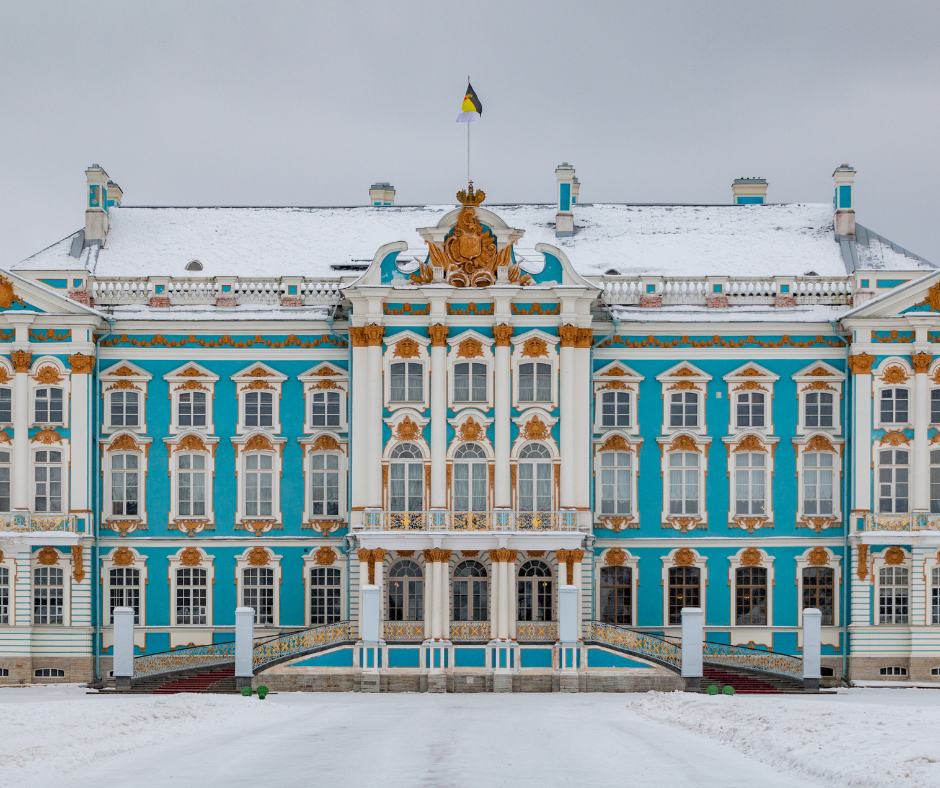

Catherine Palace, located in Pushkin near St. Petersburg, Russia, is renowned for its opulent Rococo interiors. One of the most famous rooms in the palace is the Amber Room, which features walls covered in amber panels, gold leaf, and mirrors, creating a dazzling effect.
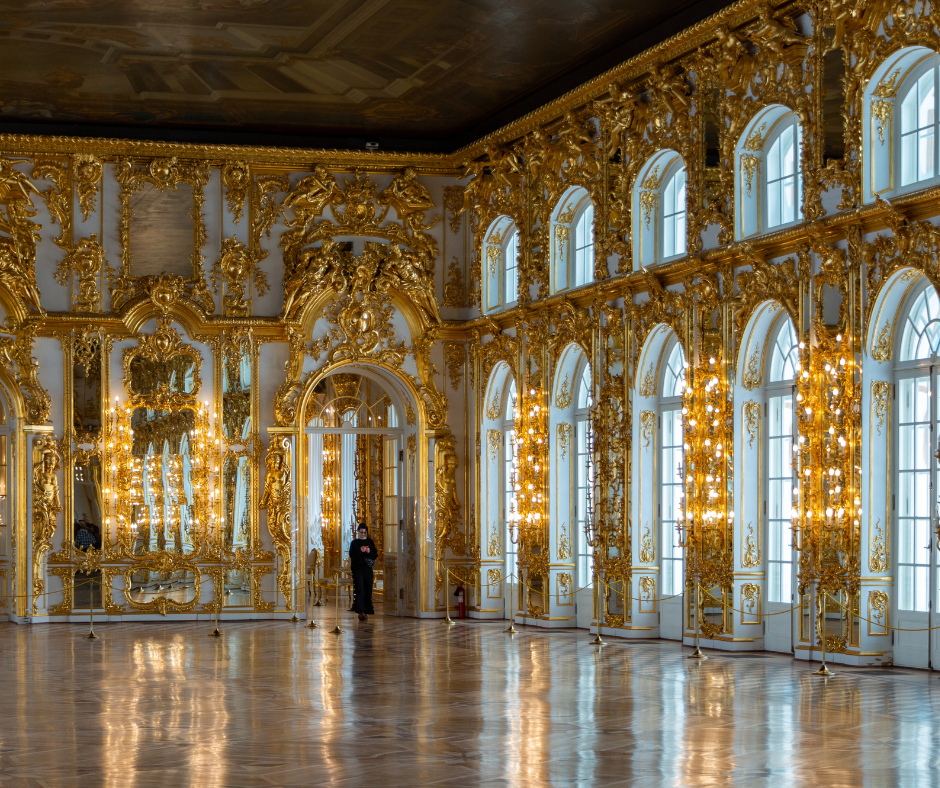

Other notable rooms include the White Dining Room and the Great Hall, both of which showcase the lavish use of gilded stucco and elaborate decorative elements that characterize the Rococo style. The palace’s interiors are a testament to the grandeur and extravagance of Russian Rococo design.
Notable Features: The Amber Room is one of the most famous interiors, with walls covered in amber panels, gold leaf, and mirrors. The White Dining Room and the Great Hall also showcase the opulent Rococo style.
Sanssouci Palace, Potsdam, Germany
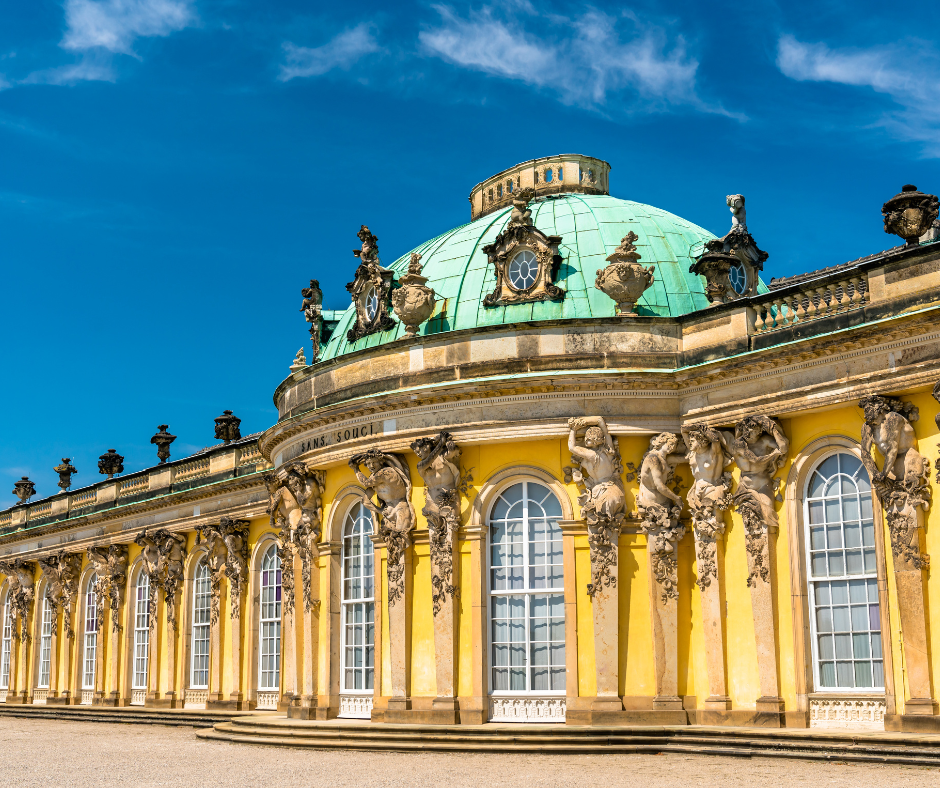

Sanssouci Palace, located in Potsdam near Berlin, was the summer residence of Frederick the Great and is a prime example of Rococo architecture. The palace features rooms such as the Voltaire Room, which is adorned with gilded stucco, exotic birds, and floral motifs. These elements reflect the playful and decorative nature of Rococo. The overall design of Sanssouci emphasizes elegance and lightness, with its ornate details and harmonious proportions, making it a key highlight of Rococo architecture in Germany.
Notable Features: The summer palace of Frederick the Great, Sanssouci, features rooms like the Voltaire Room, adorned with gilded stucco, exotic birds, and floral motifs, reflecting the playful and decorative nature of Rococo.
Charlottenburg Palace, Berlin, Germany
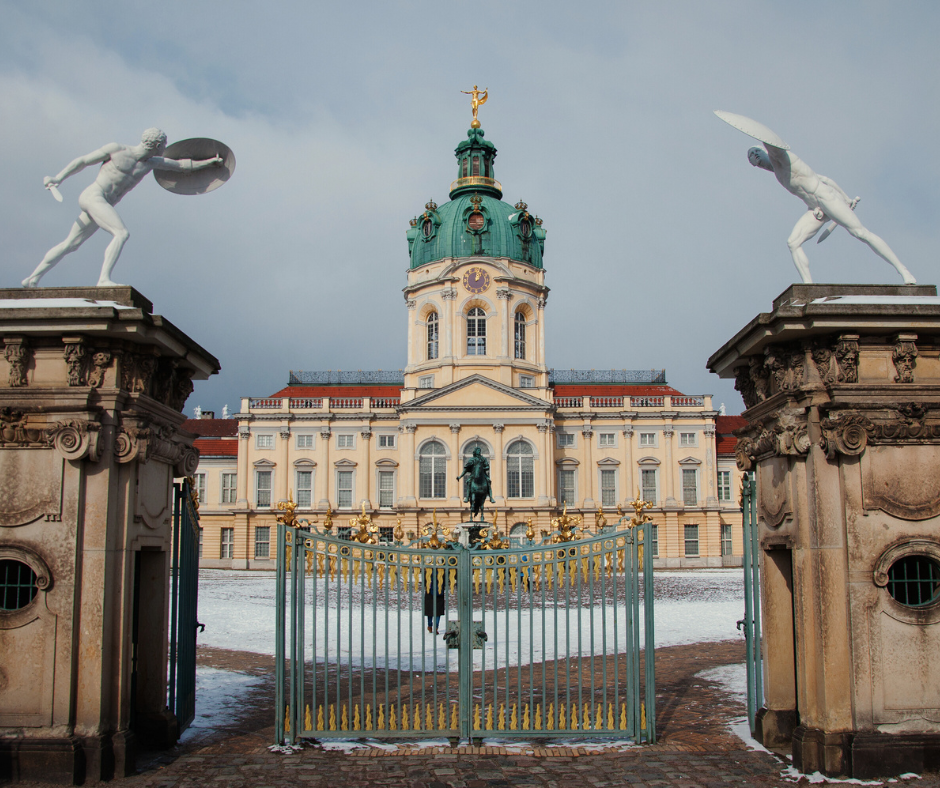

Charlottenburg Palace in Berlin houses splendid Rococo interiors, particularly in its New Wing. The Golden Gallery, a long ballroom, is one of the highlights, featuring gilded mirrors, chandeliers, and intricate stucco decorations. This room epitomizes the Rococo style with its elaborate ornamentation and elegant design, creating a luxurious and sophisticated ambiance. The palace itself is a blend of Baroque and Rococo elements, showcasing the transition between these two styles.
Notable Features: The palace’s New Wing houses splendid Rococo interiors, including the Golden Gallery, a long ballroom with gilded mirrors, chandeliers, and intricate stucco decorations.
Schönbrunn Palace, Vienna, Austria
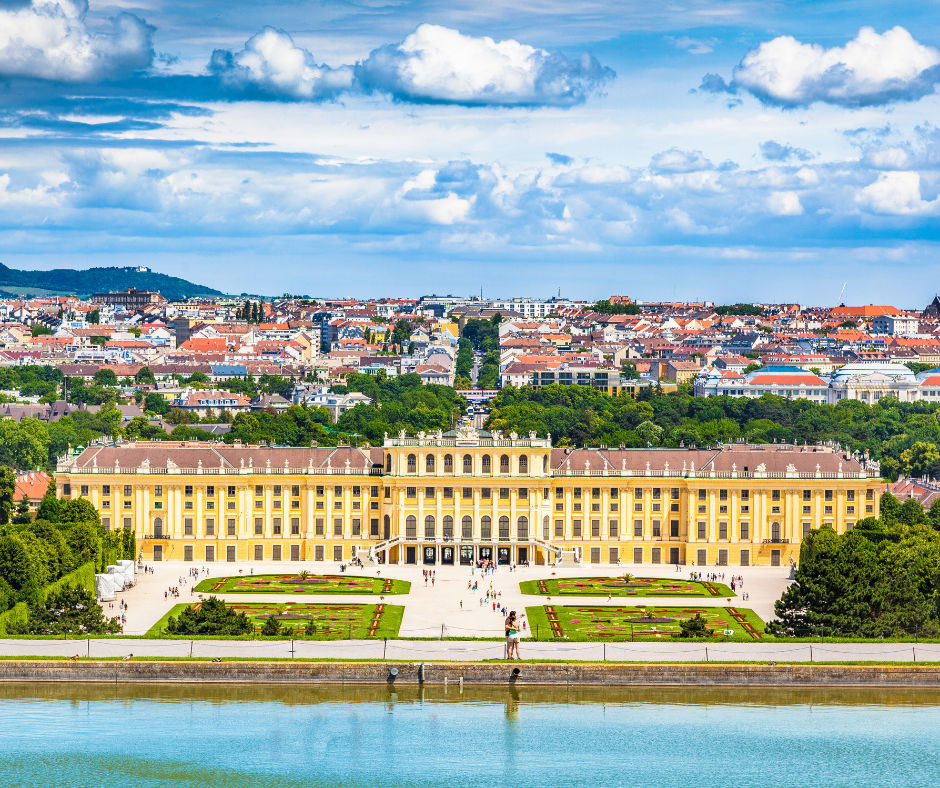

Schönbrunn Palace in Vienna features notable Rococo interiors, including the Mirror Room, where Mozart performed as a child, and the Million Room. The Million Room is particularly rich in Rococo decor, with rosewood paneling and precious miniatures from India and Persia. The palace’s interiors are characterized by their intricate stucco work, ornate mirrors, and luxurious furnishings, embodying the elegance and opulence of Rococo design.
Notable Features: The palace features the Mirror Room, where Mozart performed as a child, and the Million Room, with its rich Rococo decor, including rosewood paneling and precious miniatures from India and Persia.
Hôtel de Soubise, Paris, France
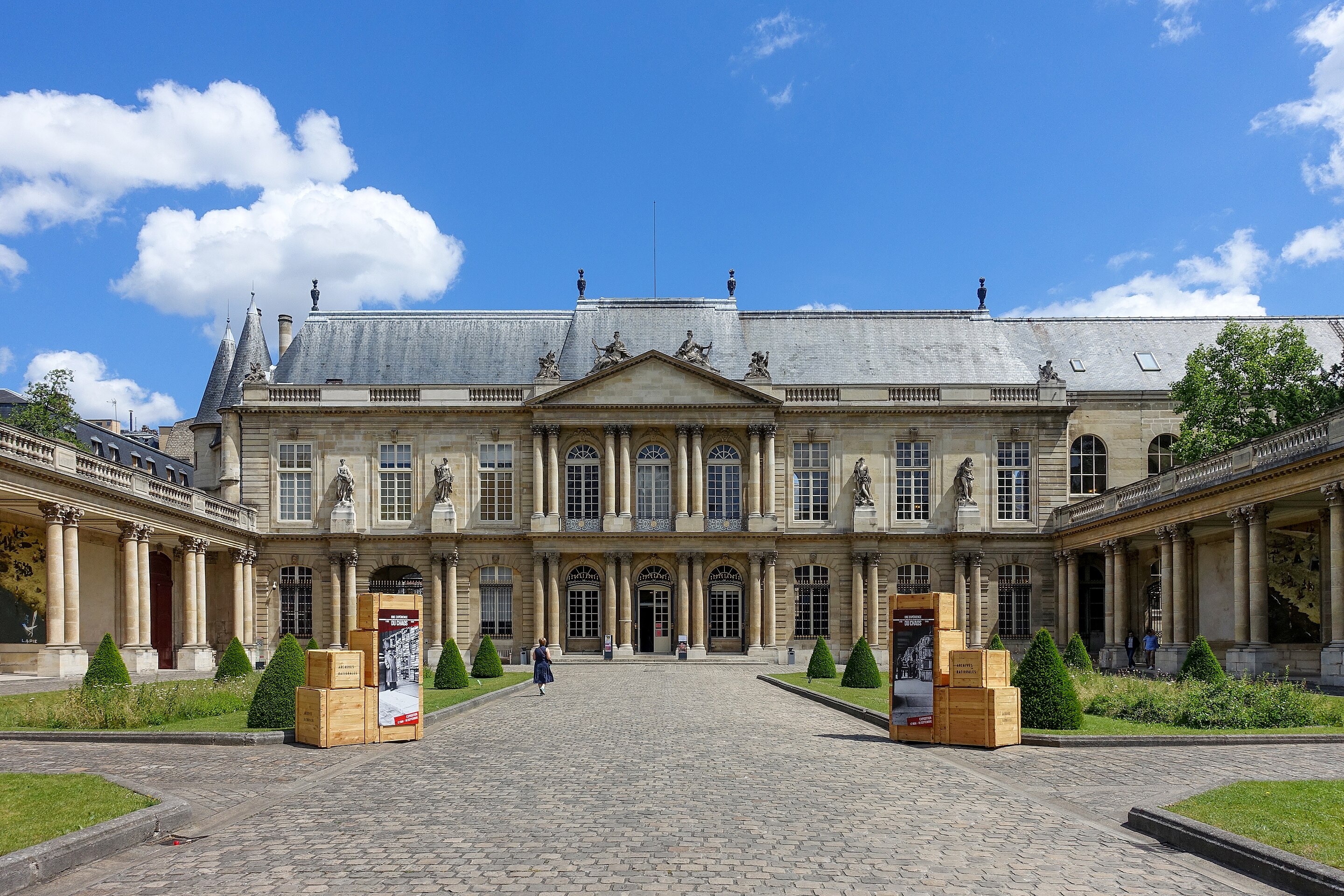

Hôtel de Soubise in Paris is renowned for its quintessential Rococo interior design, especially the Salon de la Princesse. This room features curved walls, mirrored panels, gilded moldings, and intricate ceiling paintings by Charles-Joseph Natoire. The elaborate decor and elegant design of the Salon de la Princesse make it a prime example of the Rococo style, showcasing the luxurious and ornate aesthetic that defines this artistic movement.
Notable Features: The Salon de la Princesse is a quintessential example of Rococo interior design, with curved walls, mirrored panels, gilded moldings, and intricate ceiling paintings by Charles-Joseph Natoire.
Drottningholm Palace, Stockholm, Sweden
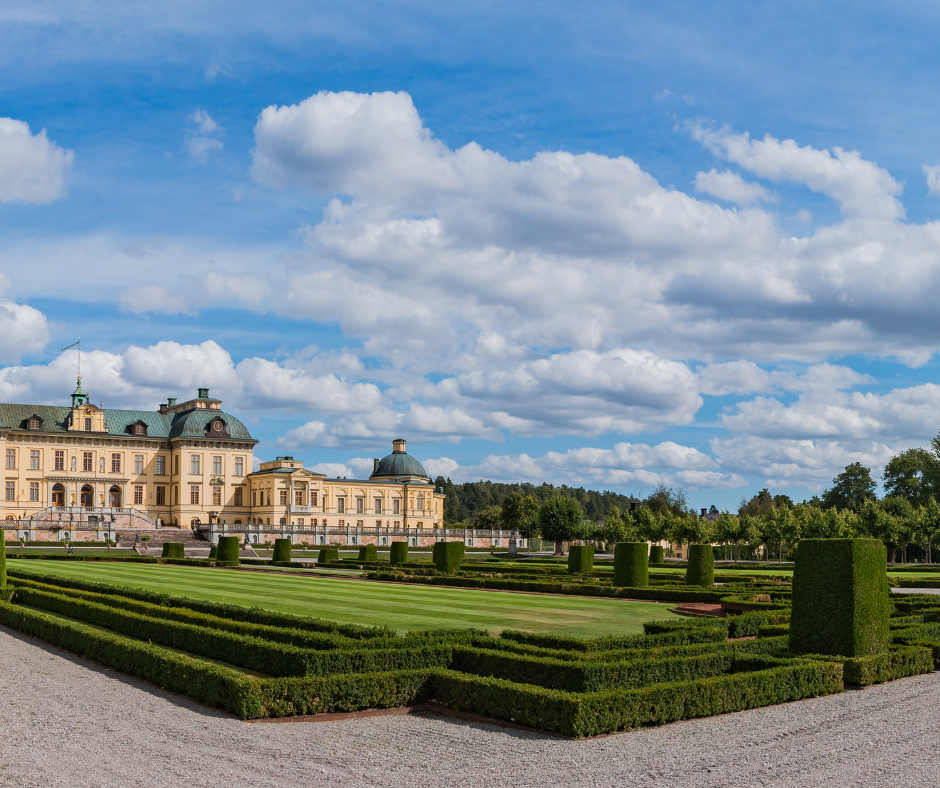

Drottningholm Palace in Stockholm includes the Chinese Pavilion, a Rococo masterpiece. This pavilion is richly decorated with Chinese-inspired motifs, reflecting the European fascination with exotic cultures during the Rococo period. The interior features intricate woodwork, delicate paintings, and luxurious furnishings that embody the elegance and decorative flair of Rococo design, making it a significant example of this style in Sweden.
Notable Features: The Chinese Pavilion, a Rococo masterpiece, includes richly decorated rooms with Chinese-inspired motifs, reflecting the European fascination with both ornamental style and exotic cultures during the Rococo era.
Final Thoughts on French Rococo in Architecture and Interiors
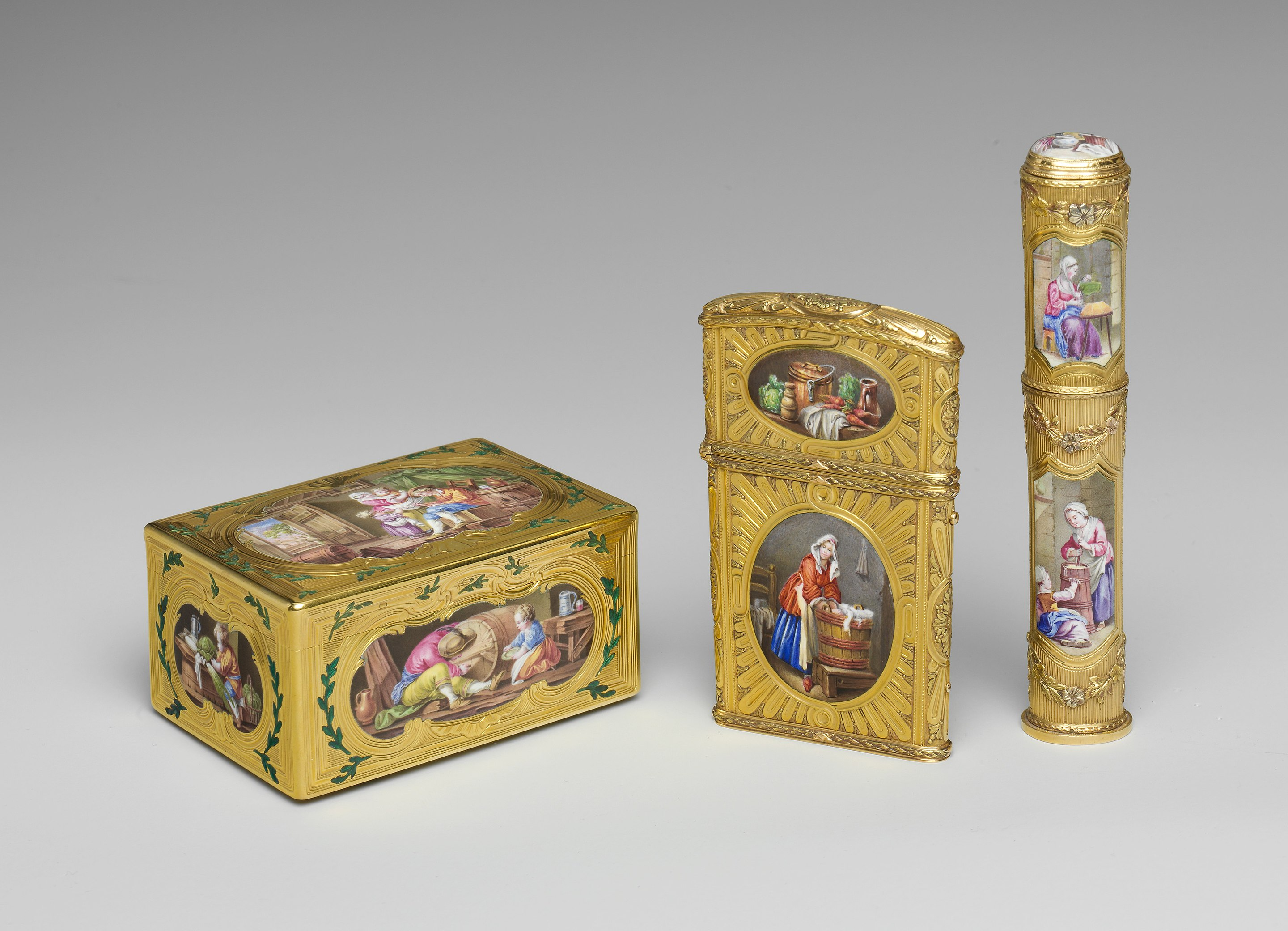

The Rococo period, with its emphasis on elegance, lightness, and decorative richness, transformed the artistic and architectural landscape of 18th-century Europe. Despite facing criticism for its perceived frivolity, Rococo’s influence extended beyond France, leaving a lasting legacy in countries such as Germany, Austria, and Portugal.
The movement’s intricate stucco work, gilded decorations, and luxurious materials continue to captivate and inspire, exemplified by the grandeur of the Würzburg Residence, the playful designs of Zwinger Palace, and the opulent interiors of the Catherine Palace. As a testament to the era’s dedication to beauty and pleasure, Rococo remains a celebrated and enduring style, reflecting the aristocratic lifestyle and artistic innovation of its time.
What do you love about this art movement and interior design style? Do you prefer Italian Rococo or British Rococo to French? Let us know in the comments below.
Design Dash
Join us in designing a life you love.
-
All About Our 7-Day Focus & Flex Challenge
Sign up before August 14th to join us for the Focus & Flex Challenge!
-
Unique Baby Names Inspired by Incredible Women from History
Inspired by historic queens, warriors, artists, and scientists, one of these unusual baby names might be right for your daughter!
-
Finding a New 9 to 5: How to Put Freelance Work on a Resume
From listing relevant skills to explaining your employment gap, here’s how to put freelance jobs on your resume.
-
What is Generation-Skipping, and How Might it Affect Sandwich Generation Parents?
The emotional pain and financial strain of generation skipping can be devastating for Sandwich Generation parents.
-
Four Material Libraries Dedicated to Sustainability, Preservation, and Education
From sustainable building materials (MaterialDriven) to rare pigments (Harvard), each materials library serves a specific purpose.
-
Do You Actually Need a Beauty Fridge for Your Skincare Products? (Yes and No.)
Let’s take a look at what dermatologists and formulators have to say about whether your makeup and skincare belong in a beauty fridge.








